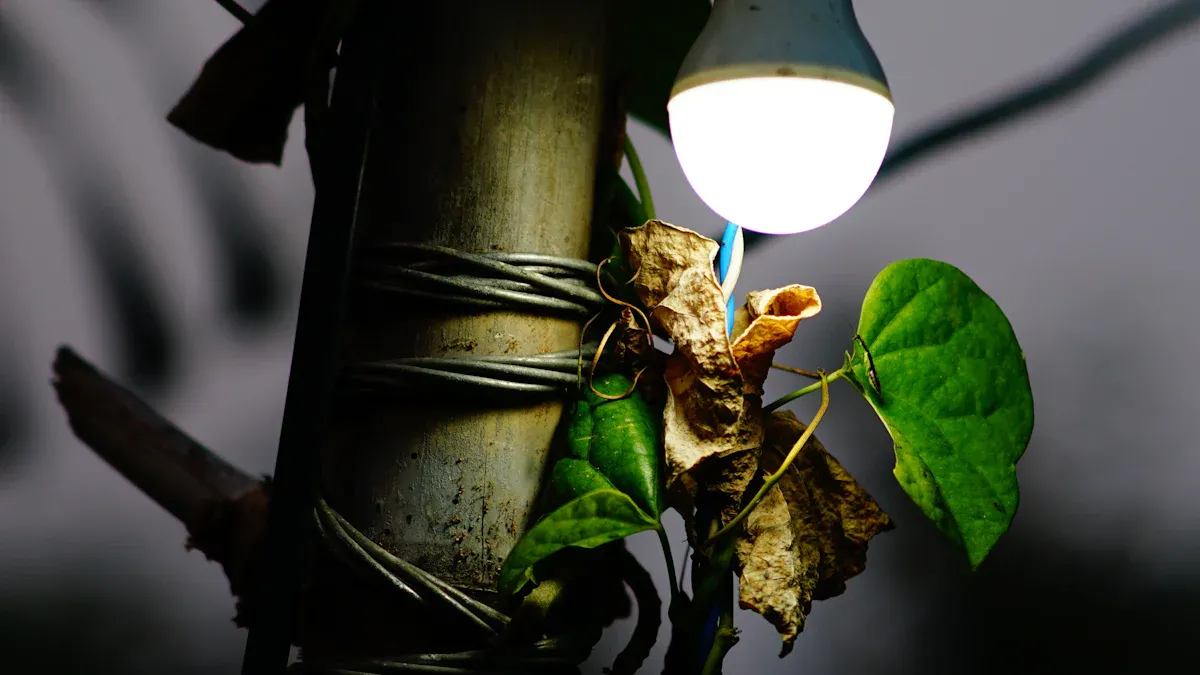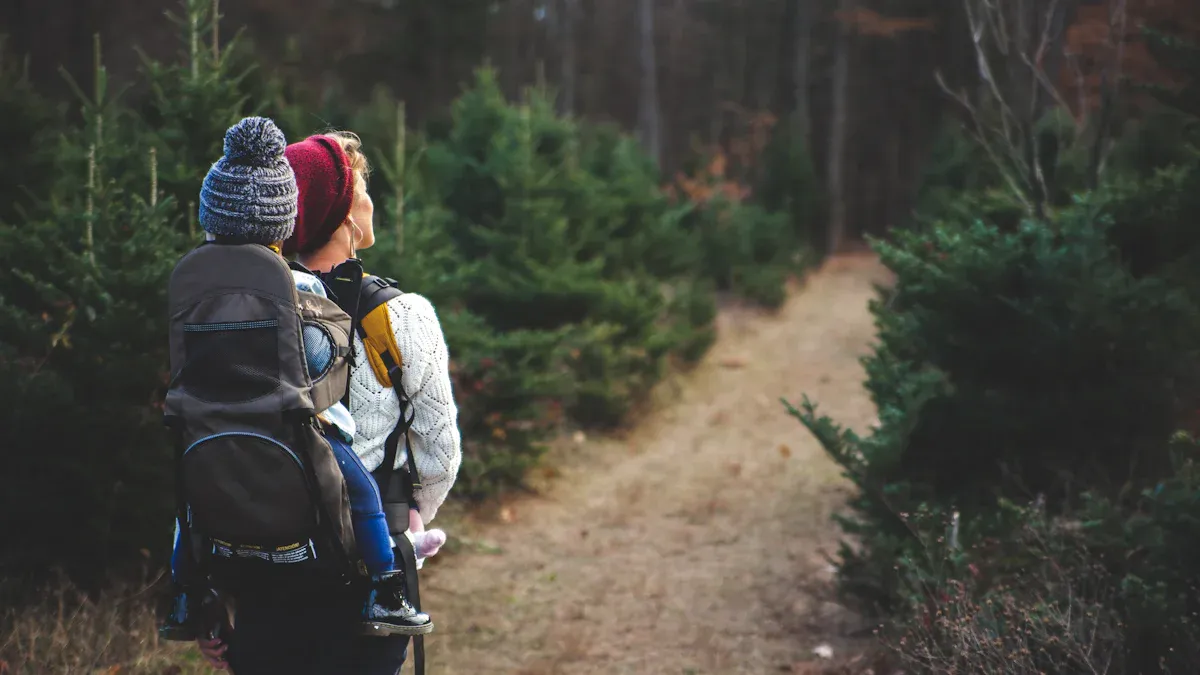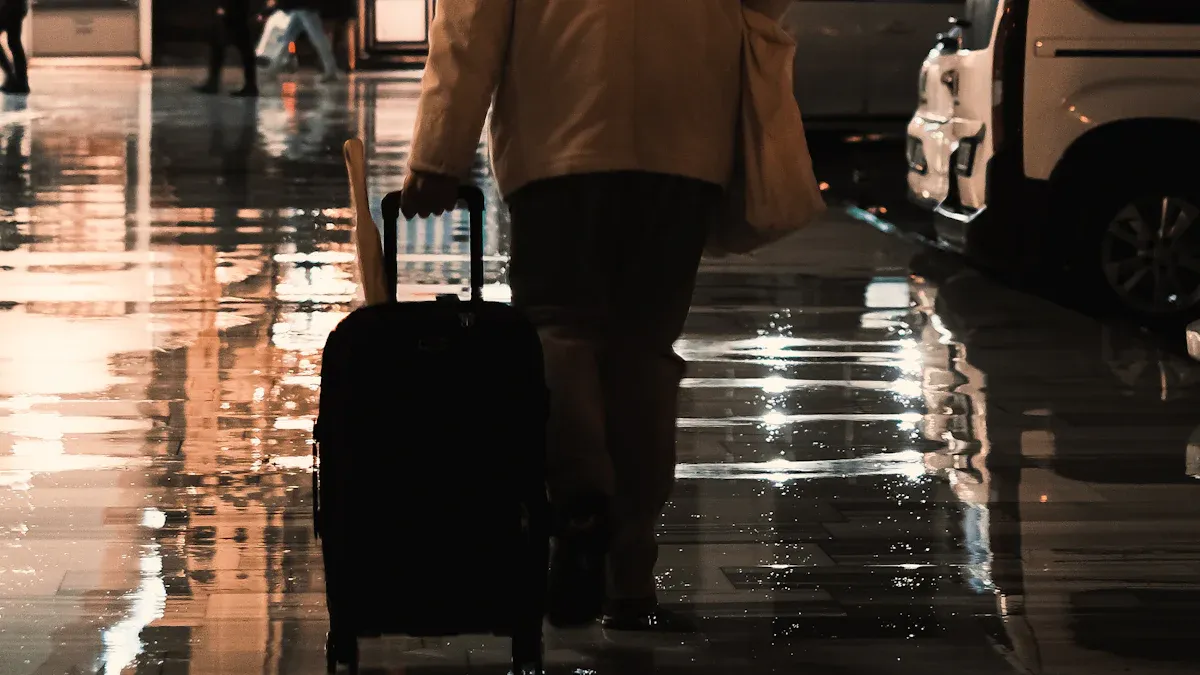Why a Flashlight Is Essential for Personal Safety on Evening Walks

Evening walks can feel peaceful, but they come with risks. Poor lighting makes it harder for others to see you and for you to spot hazards.
The vast majority of fatal pedestrian collisions and fatal bicycle crashes happen at night. In most cases, there’s little to no lighting, making pedestrians difficult to spot in the dark.
Carrying a flashlight, like the helius flashlight, boosts your visibility and keeps you safe.
Key Takeaways
Using a flashlight helps others see you at night. Drivers and bikers can notice you from far away.
A flashlight lights up your way, so you can avoid tripping or falling. This makes you feel safer walking in the dark.
In emergencies, a flashlight can call for help. It shows rescuers where you are and keeps you safer.
Practical Benefits of a Flashlight

Illuminate Path for Better Visibility
When you're walking down the street in the evening, a flashlight becomes your best friend. It helps you see clearly in low light areas, ensuring you don't miss a step. The illumination provided by a tactical flashlight is powerful enough to brighten your surroundings, making it easier to spot uneven sidewalks, potholes, or other hazards.
A flashlight doesn't just help you see—it also makes you visible to others. Drivers and cyclists can spot you from a distance, reducing the risk of accidents. Whether you're strolling through a dimly lit park or navigating a poorly lit alley, the bright beam of a flashlight ensures your safety.
Avoid Obstacles and Hazards
Low-light conditions can hide dangers like tree roots, debris, or even slippery patches. A tactical flashlight helps you avoid these obstacles by illuminating your path. Law enforcement professionals rely on flashlights in similar situations to identify threats and navigate safely. The ability to direct light precisely where it's needed allows you to stay aware of your surroundings and avoid potential injuries.
Think about how much easier it is to walk confidently when you can see what's ahead. A flashlight gives you that confidence, even in the dark.
Signal for Help in Emergencies
A flashlight isn't just for illumination—it can also save your life in emergencies. If you ever find yourself lost or in danger, you can use your flashlight to signal for help. Rescue teams often rely on flashlights to locate people in low-visibility situations, like during storms or power outages.
Flash your light repeatedly to grab attention.
Use it to guide rescuers to your location.
A tactical flashlight is a simple yet effective tool for staying safe and prepared, no matter where your evening walk takes you.
Safety Features of a Handheld Flashlight

Acts as a Psychological Deterrent
A handheld flashlight can do more than just provide illumination—it can also act as a psychological deterrent. Imagine walking in a dimly lit area and spotting a potential attacker. Shining a bright beam directly at them can make them think twice about approaching you. The sudden light draws attention to the situation, which most attackers want to avoid.
Carrying a flashlight signals that you're prepared and aware of your surroundings. This alone can discourage someone from targeting you. It's a simple yet effective way to enhance your safety during evening walks.
Useful for Self-Defense
A handheld flashlight doubles as a practical self-defense tool. Its bright beam can temporarily disorient a potential attacker, giving you precious seconds to escape or call for help. Here's how it compares to other tools:
Aspect | Flashlights | Lasers |
|---|---|---|
Disorienting Effect | Can temporarily blind or confuse an attacker | Can impair an attacker's vision from a distance |
Proximity Requirement | Effective in close-quarters situations | Allows for safe distance from threats |
Versatility | Serves multiple purposes beyond self-defense | Primarily focused on targeting |
Limitations | Less effective in well-lit environments | Requires training for effective use |
Flashlights are portable and easy to carry, making them a reliable option for personal protection. However, they work best in low-light conditions and close-range situations. Always assess your surroundings before relying on this tool.
Reveals Hidden Dangers
A handheld flashlight helps you uncover hidden dangers that might otherwise go unnoticed. Whether it's a shadowy figure lurking nearby or an unexpected obstacle in your path, the powerful beam ensures you're always aware of your environment. Tactical flashlights, in particular, offer focused illumination that cuts through the dark, revealing what lies ahead.
This feature is especially useful in emergencies. If you're searching for a safe route or trying to locate someone, the flashlight's beam provides the clarity you need. It’s a small device that offers big protection when you need it most.
Choosing the Right EDC Flashlight
Brightness and Beam Distance
When choosing an EDC flashlight, brightness and beam distance are key factors. You want a flashlight that provides enough light for your evening walks without being too overpowering. The brightness of a flashlight is measured in lumens, and different levels suit different needs.
Lumens | Description |
|---|---|
10 | Ideal for dark environments to avoid tripping without causing glare. |
30 | Sufficient for typical evening walks, depending on ambient lighting. |
60 | Provides better visibility for night walks, ensuring a safer experience. |
150+ | Recommended for biking on trails or areas with minimal lighting. |
250 | Considered more than enough for general use, even in challenging conditions. |
For most evening walks, a flashlight with 30 to 60 lumens offers high-quality illumination. If you’re venturing into darker areas, consider one with 150 lumens or more. A good flashlight ensures you can see clearly and stay visible to others.
Compact and Lightweight Design
An EDC flashlight should be easy to carry. You don’t want something bulky weighing you down during your walk. Look for a compact and lightweight design that fits comfortably in your pocket or bag. Many modern flashlights are small yet powerful, making them a reliable light source for everyday use.
A good flashlight balances portability with functionality. Some models even come with clips or lanyards, so you can attach them to your belt or wrist for quick access. This convenience ensures you’re always prepared, whether you’re walking through a park or navigating a dimly lit street.
Battery Life and Durability
Battery life is another critical factor when selecting an EDC flashlight. You need a reliable light source that won’t fail you halfway through your walk. High-quality EDC flashlights, like the Fenix E09R, can run for up to 70 hours on a single charge. Many use rechargeable 18650 lithium-ion batteries, which can be recharged up to 500 times before losing efficiency.
Durability is equally important. A good flashlight should withstand everyday wear and tear. Look for models made from tough materials like aircraft-grade aluminum. These flashlights often feature water and dust resistance, ensuring they perform well even in challenging conditions. With a durable and long-lasting flashlight, you’ll always have a dependable companion for your evening walks.
Carrying a flashlight is a simple yet powerful way to enhance your personal safety during evening walks. It boosts your situational awareness, helps you avoid hazards, and prepares you for emergency situations. Experts agree that a flashlight is an essential personal safety tool, offering visibility, self-defense, and emergency preparedness. Stay safe and confident on your walks!
FAQ
How do I carry a flashlight during evening walks?
You can clip it to your belt, keep it in your pocket, or use a wrist strap. Choose a method that feels comfortable and secure.
Can I use my flashlight for night hiking?
Yes, a flashlight is perfect for night hiking. It helps you see the trail, avoid obstacles, and stay safe in low-light conditions.
What type of flashlight is best for personal safety?
A compact, durable flashlight with at least 60 lumens works best. Look for one with a long battery life and a bright, focused beam.
See Also
Why Hunting Flashlights Are Crucial For Outdoor Adventurers
How Rechargeable Flashlights Enhance Community Safety Efforts
Essential LED Flashlights Every Home Should Have Today
Choosing Between Lanterns And Flashlights For Camping Trips
Comparing Police Flashlights And Standard Flashlights: A Guide
